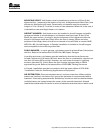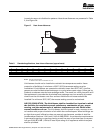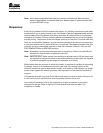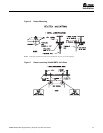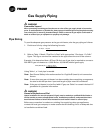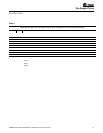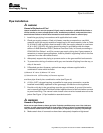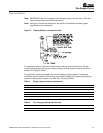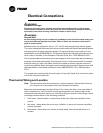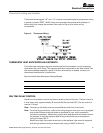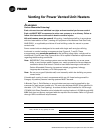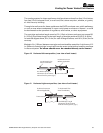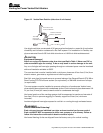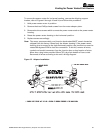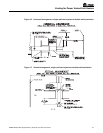
20 GHND-SVX01A-EN • High Efficiency Propeller Fan Gas Unit Heater
ƽWARNING
Hazardous Voltage!
Disconnect all electric power, including remote disconnects before servicing. Follow proper
lockout/tagout procedures to ensure the power can not be inadvertently energized. Failure to
disconnect power before servicing could result in death or serious injury.
ƽWARNING
Ground Wire!
All field-installed wiring must be completed by qualified personnel. All field-installed wiring must
comply with NEC and applicable local codes. Failure to follow this instruction could result in
death or serious injuries.
Standard units are shipped for use on 115 volt, 60 hertz single phase electric power.
The motor nameplate and electrical rating on the transformer should be checked before
energizing the unit heater electrical system. All external wiring must conform to the
latest edition of the ANSI/NFPA No. 70, National Electrical Code and applicable current
local codes; in Canada, to the Canadian Electrical Code, Part 1 CSA Standard C22.1.
It is recommended that the electrical power supply to each unit heater be provided by a
separate, fused and permanently live electrical circuit. A disconnect switch of suitable
electrical rating for each unit heater should be located as close to the gas valve and
controls as possible. Each unit heater must be electrically grounded in accordance with
the latest edition of the National Electric Code, ANSI/NFPA No. 70 or CSA Standard
C22.1.
The transformer supplied with this unit heater is internally fused. Any overload or short
circuit will ruin the transformer.
Thermostat Wiring and Location
Note: The thermostat must be mounted on a vertical vibration-free surface free from
air currents and in accordance with the furnished instructions.
Mount the thermostat approximately 5 feet (1.5 m) above the floor in an area where it
will be exposed to a free circulation of average temperature air. Always refer to the
thermostat instructions as well as our unit wiring diagram and wire accordingly. Avoid
mounting the thermostat in the following locations:
1. Cold areas - Outside walls or areas where drafts may affect the operation of the
control.
2. Hot areas - Areas where the sun's rays, radiation, or warm air currents may affect
control operation.
3. Dead areas - Areas where air cannot circulate freely, such as behind doors or in
corners.
Electrical Connections



